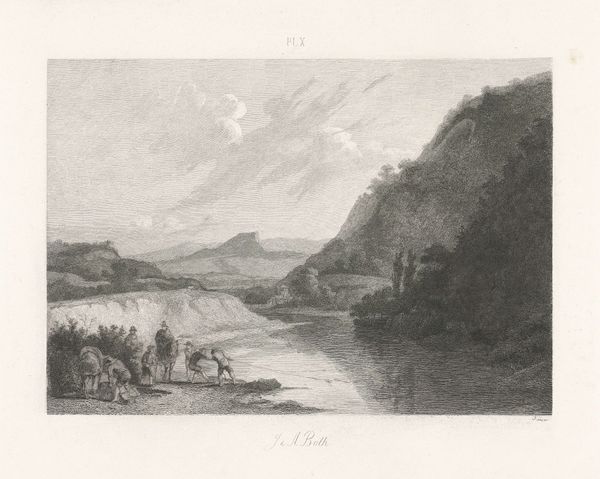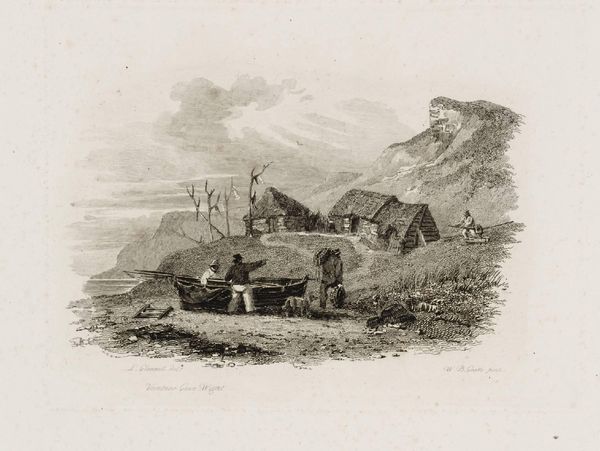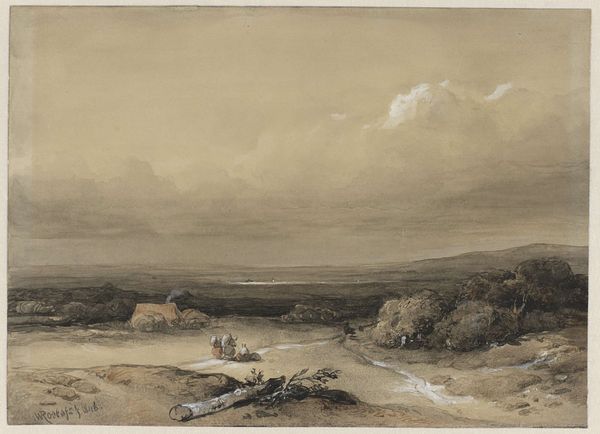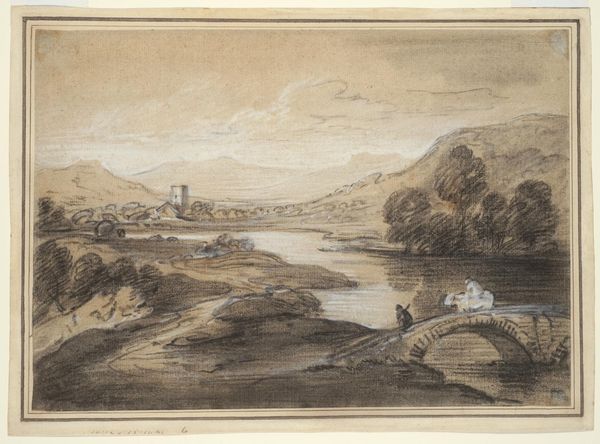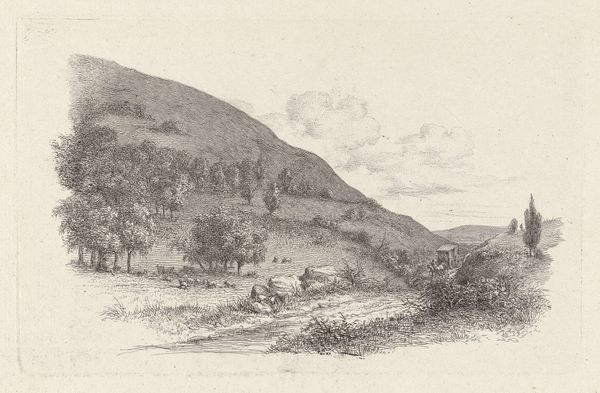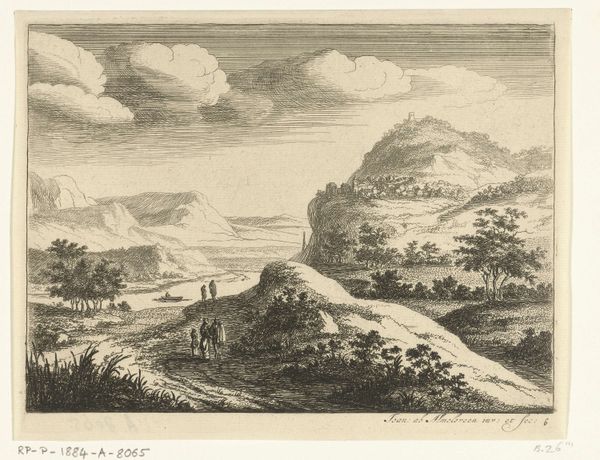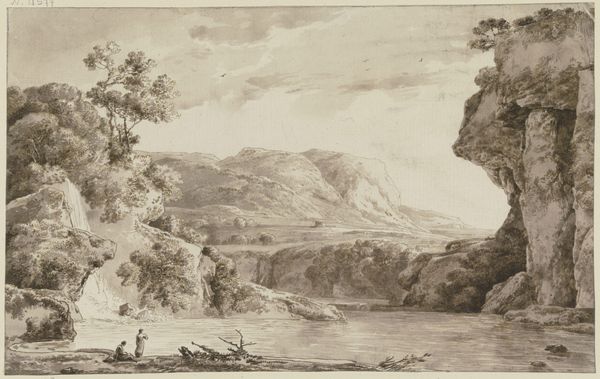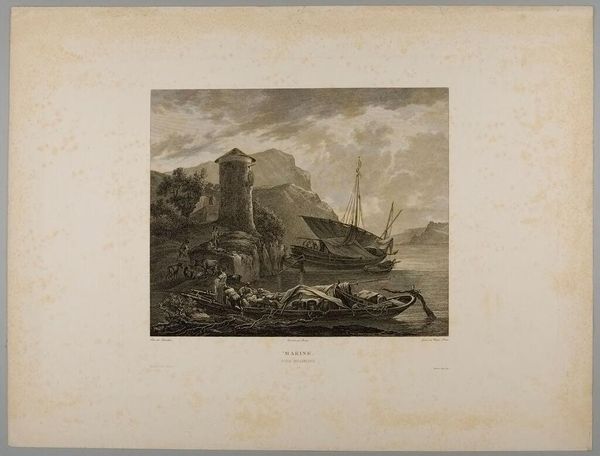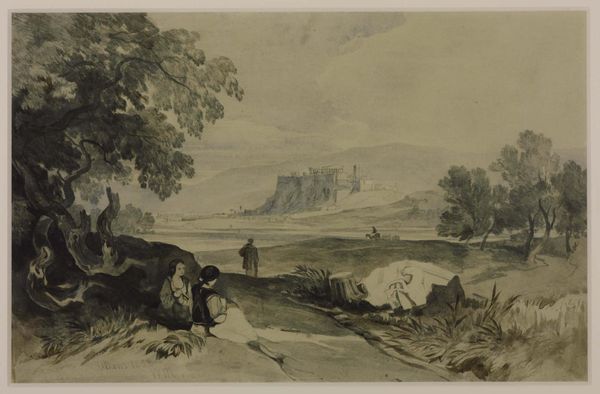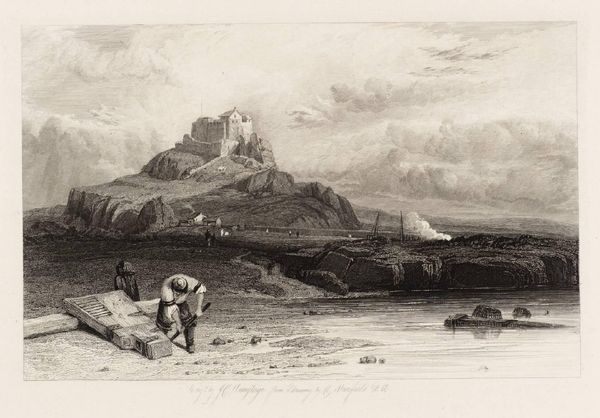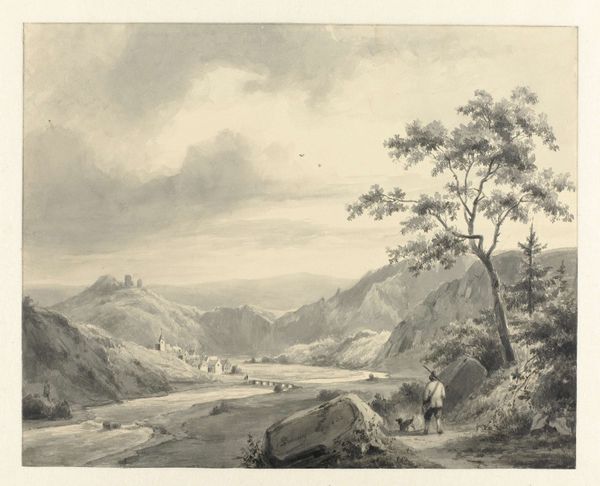
drawing, pencil
#
portrait
#
pencil drawn
#
drawing
#
pencil sketch
#
landscape
#
charcoal drawing
#
pencil drawing
#
pencil
#
realism
Dimensions: height 27.2 cm, width 37.2 cm
Copyright: Rijks Museum: Open Domain
Curator: Here we have Hendrik Huygens's "Gezicht op een rivier met enkele huizen, mogelijk Berg en Dal," a drawing completed before 1859. Editor: The first thing that strikes me is its stillness. It's like a captured breath. All those quiet grays evoke a time long past. Curator: The symbolic weight of such placid waters in 19th century Dutch art is undeniable. Rivers often represented journeys, both literal and spiritual, the flow of life itself. And in renderings like these, they provided continuity of cultural identity, the Dutch connection to their land, especially when grappling with internal strife and external threats. Editor: It makes me consider who's being reflected and who is not. I’m intrigued by the two foregrounded figures, apparently in servitude, gazing towards the river and the comfortable villa across the water. This creates a strong socio-economic contrast within a landscape, reminding me of colonial-era power dynamics often romanticized or erased in similar vistas. Curator: You raise an interesting point. Note also the strategic placement of the umbrella, acting as both shield and signifier. Protection, in the semiotic sense, isn’t merely about weather, it suggests notions of privilege and control. What's protected and from whom? Editor: Absolutely. Even in this ostensibly peaceful scene, visual cues prompt questions about equity and the unseen narratives within idealized landscapes. There's the beautiful building situated high above on its little island—almost a fortress of privilege. Curator: Huygens masterfully employs subtle symbolism. He seems concerned with evoking complex relationships between the individual, the landscape, and an implied, often uneasy social order. Editor: It reminds us that what appears tranquil on the surface often masks underlying power structures, especially regarding race and labor. Thank you for highlighting these aspects; it gives me a whole new way to consider seemingly straightforward landscape art. Curator: It’s an invitation, perhaps, to reflect on continuities of inequality encoded within landscapes past and present.
Comments
No comments
Be the first to comment and join the conversation on the ultimate creative platform.
